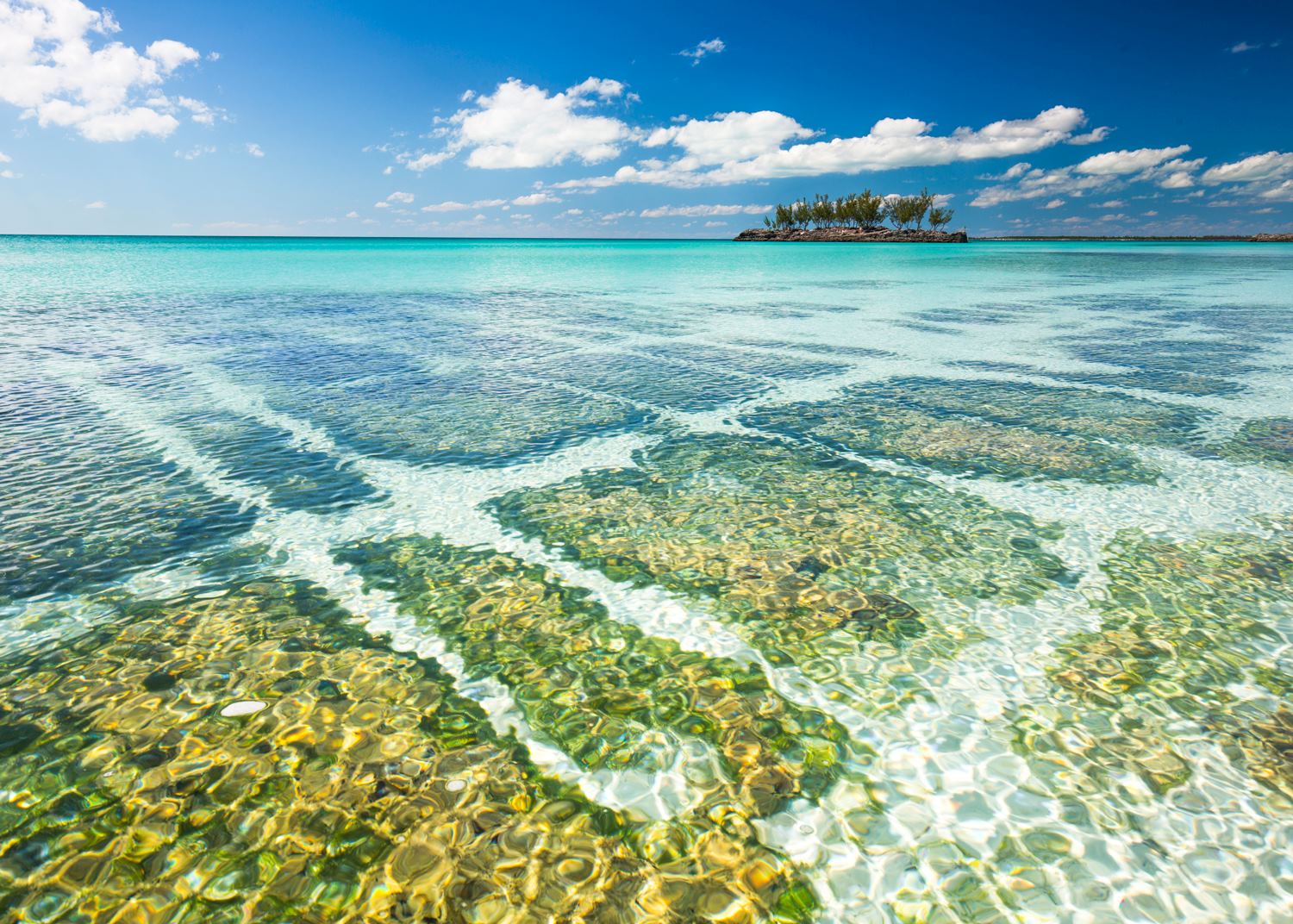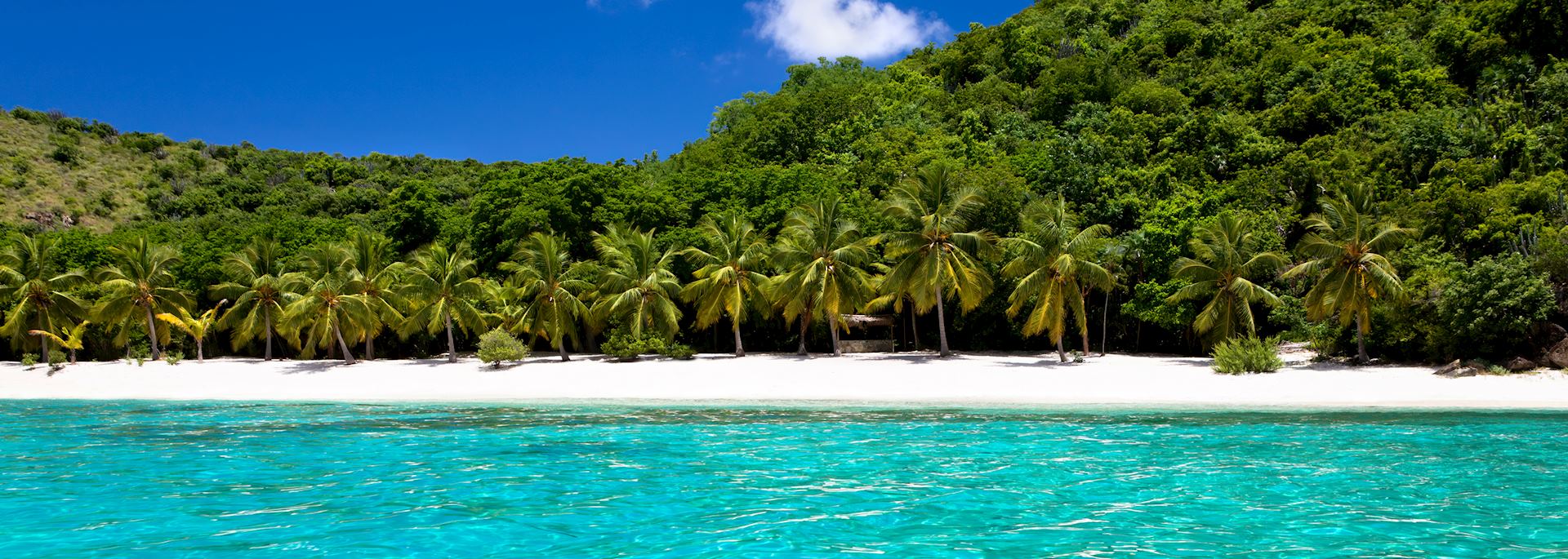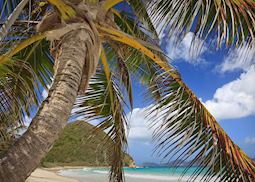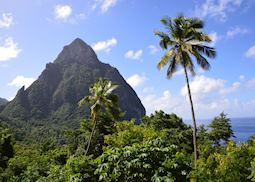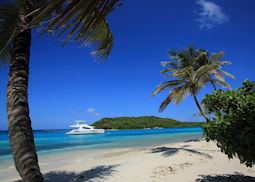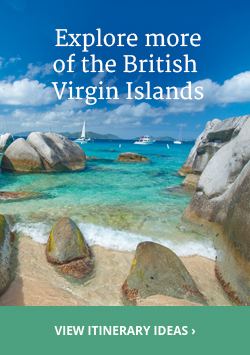The best time to visit the British Virgin Islands is between April and May, when the weather is dry and the trade winds aren’t as cool in the evening. The climate is tropical and humid, moderated by these cooling northeast winds. Temperatures are pleasantly warm year round, hovering around 27°C, although it can be significantly cooler in the evenings from December to April.
The driest months are usually February to May, with the majority of the islands’ rainfall occurring from September to November. However, when the rain does come it’s usually in brief, heavy bursts. The average hours of sunshine don’t have a huge variation through the year.
Month-by-month guide for travelling in the British Virgin Islands
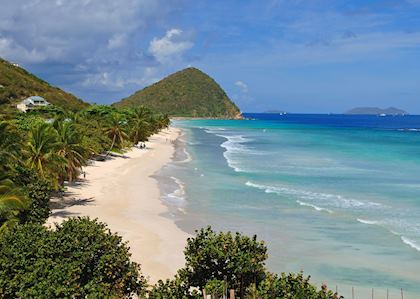
Visiting the British Virgin Islands in January
January has an average high of 29°C (84°F), falling to a comfortable 20°C (68°F) in the balmy evenings. Although there are rainy days, it is still one of the driest months, with brief, tropical showers giving way to sunshine for the rest of the day. It is a popular month to travel and we recommend booking well in advance.
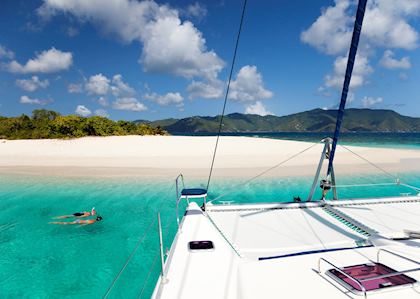
Visiting the British Virgin Islands in February - March
These are the driest months, making them the most popular time to travel, so we recommend booking in advance. The occasional shower is still possible but they are usually short bursts in the late afternoon, clearing the air.
Events & Festivals
- The 7th March is a public holiday, commemorating the birthday of the islands' first Chief Minister, the late Hamilton Lavity Stoutt. There are uniformed parades and relaxed beach barbecues across the islands.
- Toward the end of March each year is the British Virgin Islands Spring Regatta and Sailing Festival, which is based in Nanny Cay.
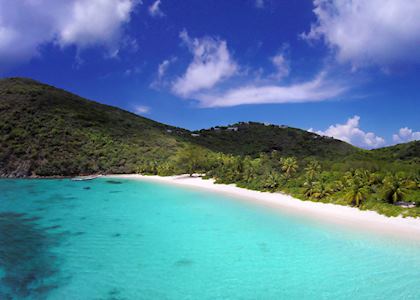
Visiting the British Virgin Islands in April - May
These months can be a great time to travel as prices are lower and the weather is only slightly wetter than in February and March. Temperatures average a comfortable 26°C (78°F).
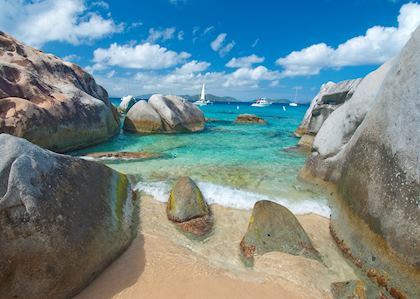
Visiting the British Virgin Islands in June - November
An excellent value time to travel, prices are often a fraction of those offered during the high season. Rainfall is at its highest, peaking in October. This usually consists of relatively short but heavy tropical showers. However, there are still plenty of sunshine hours and the islands become more lush with rich green vegetation and beautiful tropical flowers. The official hurricane season falls between July and November, although storms rarely occur before September.
Events & Festivals
- In August the islands celebrate the emancipation from slavery, with parades, concerts, horse races and sailing regattas. Spread over a busy two weeks, it’s the main annual festival.
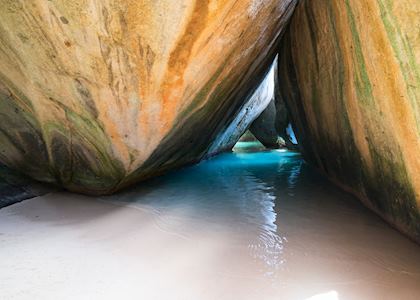
Visiting the British Virgin Islands in December
The beginning of the dry season, although there are still occasional showers, usually only lasting a few hours in the late afternoon. The islands are wonderfully lush after the rainy season. Christmas is a very popular time to visit, with many people booking a year or more in advance.
Events & Festivals
- New Year is celebrated with island-wide enthusiasm. There are many lively beach parties, local concerts and more refined parties and à la carte banquets.
Why travel with Audley?
- 100% tailor-made tours
- Fully protected travel
- Established for over 25 years
- 98% of our clients would recommend us
Travel advice
Practical tips for travelling to the British Virgin Islands, from social protocols to guidance on money matters, with a link to the latest FCDO travel advice.
Trip ideas and travel guides for exploring the British Virgin Islands
-
What to do in the British Virgin Islands: our highlights guide ![Tortola Beach, Tortola, British Virgin Islands]()
What to do in the British Virgin Islands: our highlights guide
What to do in the British Virgin Islands: our highlights guide
Read this guide -
Caribbean honeymoons ![Piton, Saint Lucia]()
Caribbean honeymoons
Caribbean honeymoons
Read this guide -
Where in the Caribbean? Our island guide ![The Moorings 514 Power Catamaran]()
Where in the Caribbean? Our island guide
Where in the Caribbean? Our island guide
Read this guide
